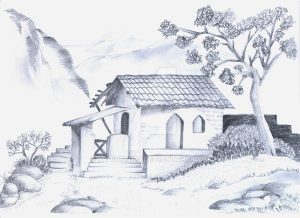Crafting a nature pencil drawing allows the artist to capture the beauty of the natural world with a timeless and classic medium. Begin by selecting a scene or subject that resonates with the serenity of nature, whether it’s a tranquil landscape, a majestic tree, or a delicate flower. The monochromatic elegance of pencil drawing lends itself well to conveying the intricate details of leaves, the texture of bark.
A Guide to Nature Pencil Drawing
Nature, with its vast landscapes, intricate details, and diverse life forms, offers endless inspiration for artists. Pencil drawing, with its simplicity and versatility, is a perfect medium to capture its essence. Whether you’re a seasoned artist or just starting out, here’s a guide to help you embark on your nature drawing journey:
Materials:
- Pencils: HB, 2B, 4B, and 6B pencils are commonly used, offering a range of darkness for shading and details.
- Sharpener: Keep your pencils sharp for precise lines and delicate details.
- Eraser: A good eraser is essential for correcting mistakes and achieving smooth tones.
- Drawing paper: Choose smooth, acid-free paper with a weight that suits your desired style. Heavier paper is ideal for wet media like blending stumps or erasers.
- Blending tools: Blending stumps or tortillions help soften lines and create smooth transitions between tones.
- Reference photo (optional): Using a reference can improve accuracy and provide inspiration, especially for beginners.

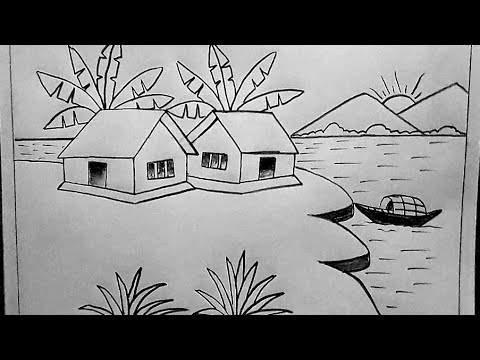
Mastering the Basics of Nature Pencil Drawing
To delve deeper and truly master the basics of nature pencil drawing, let’s explore some key aspects and advanced techniques:
Understanding Light and Shadow:
- Light source identification: Determine the primary source of light (sun, lamp, etc.) and analyze how it casts shadows on your subject. Observe how shadows change intensity and direction based on their proximity to the light source.
- Value scales: Practice creating a value scale using your chosen pencils, ranging from lightest to darkest tones. This helps control shading transitions and create realistic depth.
- Form definition: Use shading strategically to define the form of your subject. Pay attention to highlights, midtones, and shadows, and how they work together to create a three-dimensional illusion.
Capturing Texture and Details:
- Observation is key: Closely observe the textures of natural elements like bark, leaves, fur, or water. Experiment with different hatching and stippling techniques to replicate these textures accurately.
- Varying linework: Don’t rely on uniform lines. Use a combination of thick and thin lines, scribbles, and dots to create a more dynamic and realistic representation of textures.
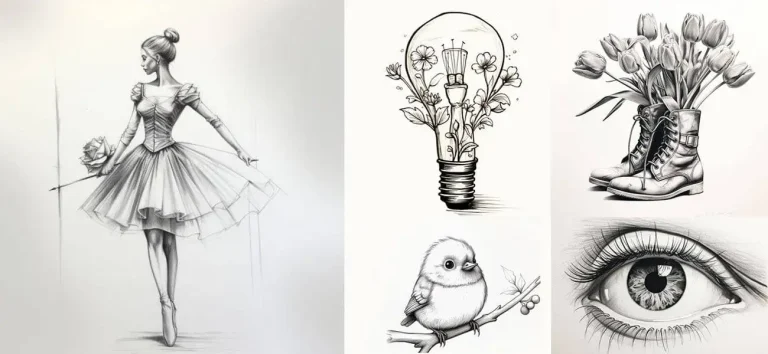
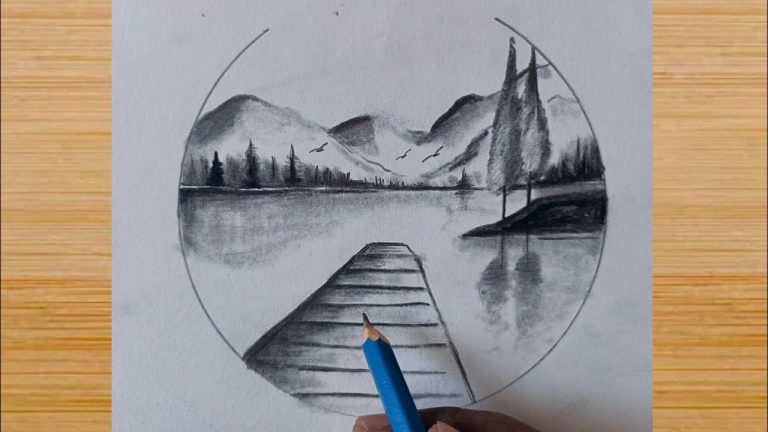
Nature Pencil Drawing for Beginners
Embarking on your nature pencil drawing journey? Here are some beginner-friendly tips to get you started:
Choose a Simple Subject:
- Start with basic natural elements like leaves, rocks, fruits, or flowers. These offer manageable shapes and textures for beginners.
- Look for subjects with clear outlines and minimal details, like a single leaf with defined veins or a smooth pebble.
Focus on Basic Shapes and Composition:
- Break down your subject into simple shapes like circles, ovals, squares, and triangles.
- Arrange these shapes on your paper, considering the rule of thirds for a balanced composition.
- Use light pencil strokes to sketch lightly without pressing too hard. This allows for easy erasing and adjustments.
Gradual Shading and Value:
- Start with a light HB pencil to establish the basic form and overall value (lightness/darkness) of your subject.
- Gradually build up darker tones with softer pencils like 2B and 4B, focusing on shadows and areas closest to you.
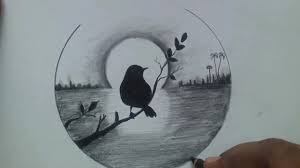
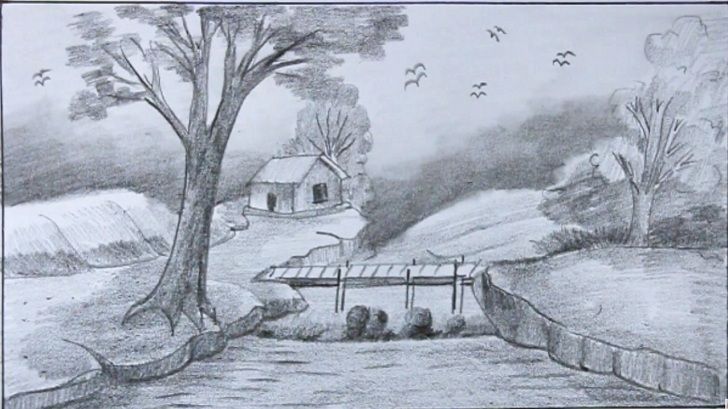
A Step-by-Step Save Nature Pencil Drawing
Step-by-Step Save Nature Pencil Drawing: A Majestic Tree
This guide will take you through creating a symbolic drawing of a majestic tree standing tall amidst a polluted landscape, urging us to save nature.
Materials:
- Pencil set (HB, 2B, 4B, 6B)
- Eraser
- Sharpener
- Drawing paper
- Blending stump (optional)
Sketch the tree:
- Lightly sketch the outline of the tree using HB pencil. Start with the trunk, then add branches reaching upwards. Aim for a strong, proud posture.
- Define the shape of the leaves as clusters or individual leaves, depending on the type of tree you choose.
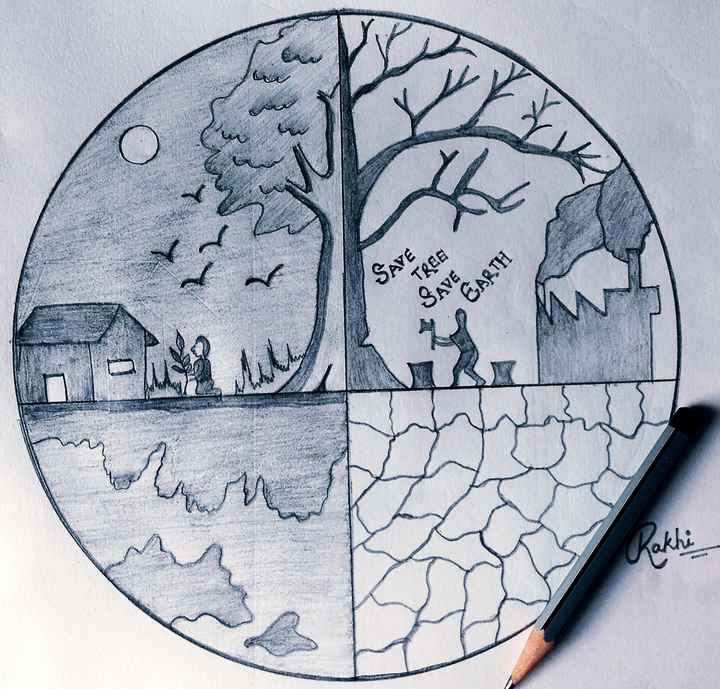
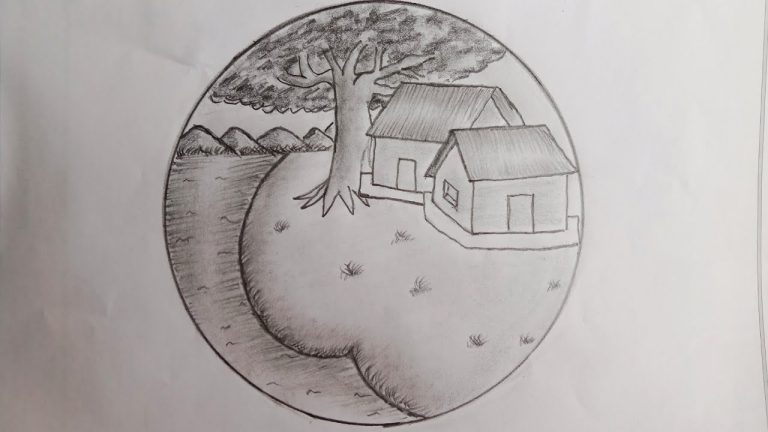
Nature Pencil Drawing Techniques
To elevate your nature pencil drawings from good to great, explore these insightful techniques:
Capturing Movement and Life:
- Dynamic lines: Break away from static outlines. Use loose, expressive lines to suggest wind blowing through leaves, birds in flight, or water flowing in a stream.
- Blurring and smudging: Experiment with smudging tools or your finger to create a sense of movement, especially for flowing water, clouds, or smoke.
- Implied motion: Draw objects in mid-action, like a bird taking off or a leaf falling, to capture the dynamism of nature.
Creating Depth and Atmosphere:
- Aerial perspective: As objects recede into the distance, their colors become lighter, cooler, and less distinct. Use this technique to create a sense of depth in landscapes.
- Overlapping elements: Draw objects partially obscuring each other to create depth and suggest layers within your scene.
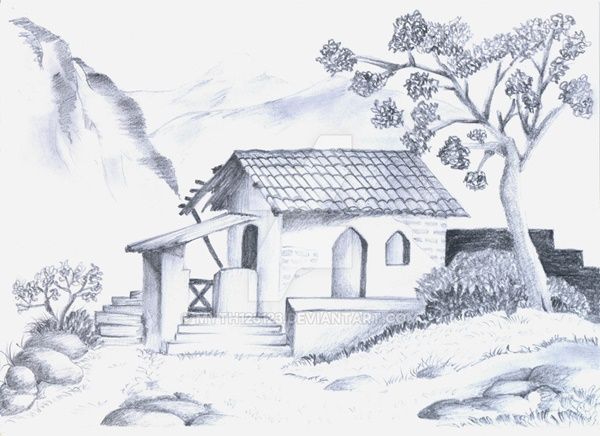
Frequently Asked Questions (FAQs)
Smooth, heavyweight paper is ideal. Options like Bristol board or hot-pressed watercolor paper offer good texture and prevent smudging.
Time varies depending on complexity. Simple drawings can take 30 minutes, while detailed landscapes might require several hours.
Nature itself is the best inspiration! Go for walks, observe landscapes, and take photos. Look at other artists’ work online or in books for additional ideas.
